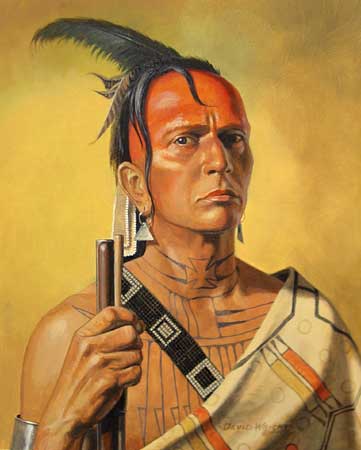Chapter 3 - 3.5
Chapter 3: Social problems in reservations
3.5. Crime among Indians’ Reservations
Recently, there is a tendency of increasing crime and violence in the American Indians’ Reservations. According to the report of U.S. Department of Justice (Policing on American Indian Reservation 2001 :8) “The threat of increasing crime, particularly violent crime is especially worrisome because we know far less than we would like about crime in Indian Reservation”. Currently, the general criminal trends can be noticed in the Reservations. This is because the data from different reservations varies to some extent. For instance, in the 1995 in the Gila River Reservation which population make up of approximately 10,000 people registered at least 15 homicides while in the Oglala Sioux tribe (around 40,000 people) there was only one case of murdering (Policing on American Indian Reservation 2001 : 24). Another example is the case of “the Red Lake reservation in the northern part of the state of Minnesota. Police and investigators received emergency calls about a suicide, a murder, three stabbings, two shootings and multiple incidents of domestic violence” ( Rise in violent crime on Indian reservations prompts new US effort 2009). Furthermore, there is also increasing crime among young people caused by alcohol abuse. “ Reports of violence on reservations especially the poorest and most remote are constant. Red Lake has certainly known its share of crimes. In 2005, a 16-year-old there killed seven people at his school and two people on the reservation.” (Rise in violent crime on Indian reservations prompts new US effort 2009.) It is also important to mention about Native American women who suffer from the violence.
A report released by the Department of Justice, American Indians and Crime, found that Native American women suffer violent crime at a rate three and a half times greater than the national average. National researchers estimate that this number is actually much higher than has been captured by statistics; according to the Department of Justice over 70% of sexual assaults are never reported (Bhungalia Native American Women and Violence).
The department of Justice shows the difficult situation of women in the reservations. It is believed that around 70 percent of sexual abuse are not even reported. In addition, Native American women suffer from violence 3,5 more than the national average. “Police and courts tend to ignore cases of violence involving Native American women due to alleged confusion between federal and tribal jurisdiction. Law enforcement and attorneys often are not schooled to deal with the cross-over in dealing between jurisdictions” (Bhungalia Native American Women and Violence). The crime rates are high due to insufficient number of police officers. “The Cheyenne River Reservation in central South Dakota covers 1.4 million acres and is home to 8,000 members of the Cheyenne River Sioux tribe. Despite rising crime rates, the tribal police force consists of only 11 officers, four sergeants, one lieutenant, and the chief of police.” Another reason why there is high rate of crime is the application process which can take a long time. “not all tribes can afford to even establish a police department. Those without the adequate funds rely on the Bureau of Indian Affairs to assign officers to their reservations” (Méndez Crime and punishment: Law enforcement issues on Indian reservations).
The president of the United States, Barack Obama “signed the Tribal Law and Order Act, which provides greater law enforcement powers for tribal authorities on Indian reservations.” Hopefully, this act is supposed to reduce the average of crime which is 20 times higher in the reservations than the national average.
The law requires the Department of Justice to improve coordination with tribal justice officials in prosecuting crimes on reservations, and provides resources for better overall cooperation between tribal, state and federal agencies. In addition, the measure increases the maximum sentence that tribal courts can impose to three years, instead of the previous limit of a one-year sentence. Supporters of the measure say the sentencing provision will expand the number of cases handled by tribal courts, increasing local tribal control on reservations. (Obama signs bill targeting crime on Indian reservations 2010).
The Tribal Law and Order Act is to improve the cooperation between state, federal and tribal agencies. Additionally, to make the sentences longer from one year to three years and to improve the control of local tribal control on the reservation.
